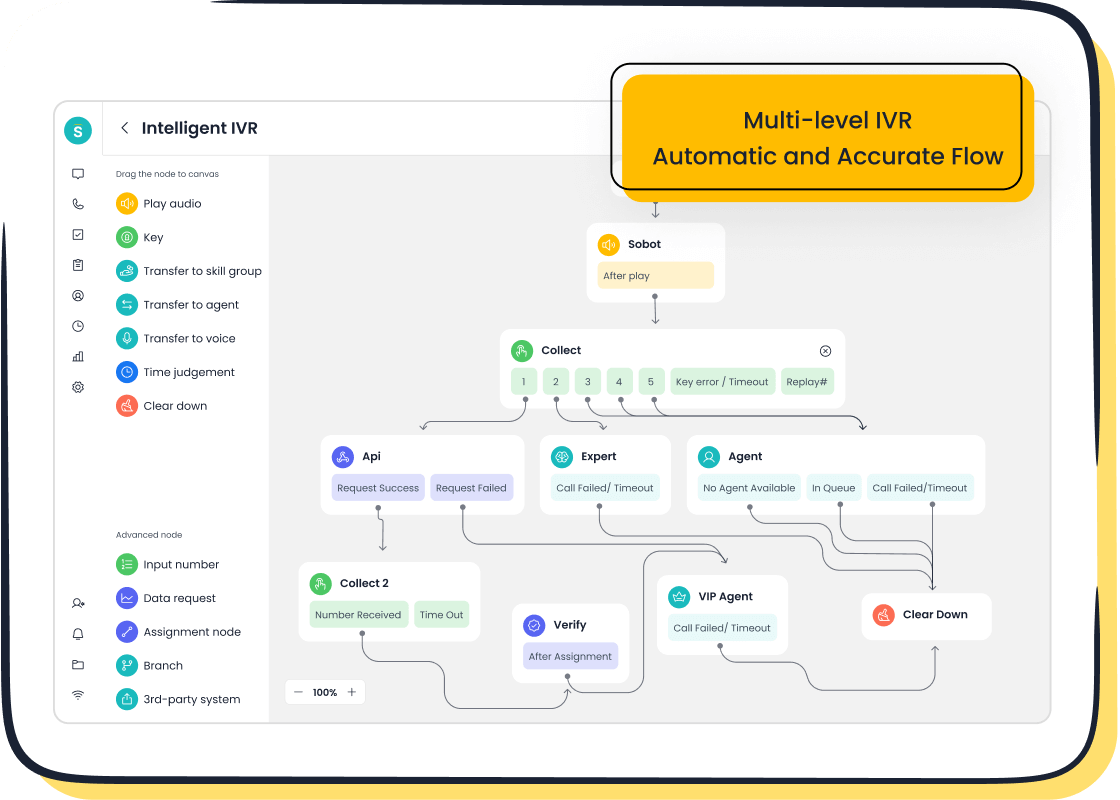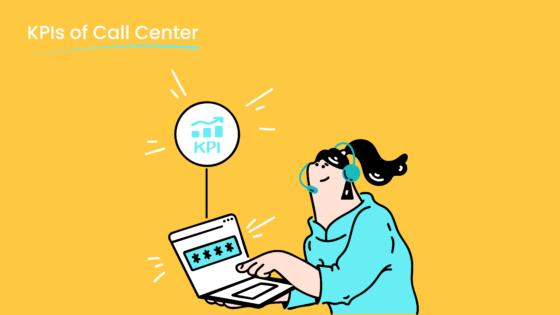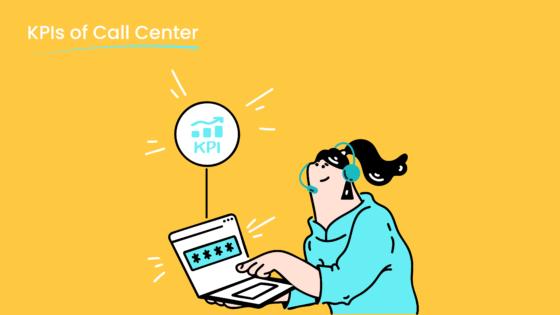How to Improve Average Call Answer Rate (ACR) Effectively

Average Call Answer Rate (ACR) measures the percentage of incoming calls answered by agents in contact centers. It serves as a vital metric for evaluating operational efficiency and customer satisfaction. A higher ACR ensures fewer abandoned calls, directly impacting the customer satisfaction score and overall experience. Studies show that 34% of callers hang up if their call isn’t answered promptly, emphasizing the need for efficient call handling.
Maintaining a low Average Speed of Answer (ASA) is equally crucial. Many contact centers aim for an ASA of 60 seconds or less to reduce abandonment rates and improve satisfaction. However, focusing solely on ACR without considering service quality can lead to rushed interactions. Balancing speed with quality ensures customers feel valued, fostering trust and loyalty. Tools like Sobot’s Voice/Call Center help achieve this balance by optimizing call routing and monitoring performance in real time.
Understanding Average Call Answer Rate (ACR)
What is ACR?
Definition and calculation of ACR
Average Call Answer Rate (ACR) measures the percentage of incoming calls answered by agents in a call center. It reflects how effectively your team handles customer inquiries. To calculate ACR, divide the number of answered calls by the total number of incoming calls, then multiply by 100. For example, if your team answers 900 out of 1,000 calls, your ACR is 90%. This metric helps you monitor and report call center KPIs, ensuring your operations meet customer expectations.
Common industry benchmarks for ACR
Industry benchmarks for ACR vary by sector. Many call centers aim for an ACR of 85% or higher. However, achieving this depends on factors like call volume, staffing, and technology. For instance, retail and financial services often target higher rates due to their focus on customer satisfaction. Tools like Sobot’s Voice/Call Center can help you meet these benchmarks by optimizing call routing and reducing the average speed of answer.
Why is ACR important?
Impact of ACR on customer satisfaction and call center metrics
A high ACR directly impacts customer satisfaction. Customers expect quick responses, and unanswered calls can lead to frustration. Studies show that higher ACRs correlate with improved first-call resolution rates and positive customer experiences. Additionally, ACR influences key call center metrics like service levels, which measure the percentage of calls answered within a specific timeframe. Monitoring and improving ACR ensures your team delivers a seamless experience.
Role of ACR in improving overall call center performance
ACR plays a vital role in call center performance metrics. It reflects your team's accessibility and responsiveness. For example, higher ACRs often lead to better first-call resolution rates and increased customer satisfaction. The table below highlights these relationships:
| Metric | Relationship with ACR |
|---|---|
| First-Call Resolution Rate | Higher ACR correlates strongly with improved rates. |
| Customer Satisfaction | Increased ACR leads to higher satisfaction levels. |

Analyzing ACR helps you identify areas for improvement and optimize the customer experience. Sobot’s solutions, such as intelligent IVR and real-time monitoring, enable you to enhance ACR while maintaining service quality.
Technology-Based Solutions to Improve ACR

Leveraging Sobot's Voice/Call Center for ACR Optimization
Intelligent IVR for efficient call routing
An interactive voice response system (IVR) plays a crucial role in optimizing call handling. Sobot’s intelligent IVR allows you to customize greetings, build menus, and route calls to the right agents or teams. This system ensures callers reach the most qualified agent quickly, reducing wait times and improving customer satisfaction. For example, Weee!, an online Asian supermarket, used Sobot’s IVR to address language barriers and streamline call routing. This resulted in a 20% increase in agent efficiency and a 50% reduction in resolution time. By implementing intelligent IVR, you can enhance call routing and ensure a seamless experience for your customers.
Real-time monitoring and analytics for better decision-making
Real-time monitoring tools provide valuable insights into call center performance. Sobot’s Voice/Call Center offers advanced analytics that track metrics like Average Speed of Answer (ASA) and First Call Resolution (FCR). These insights help you identify bottlenecks and make informed decisions to improve ACR. For instance, global call centers achieve FCR rates of up to 80%, which reduces repeat calls and enhances customer retention. With Sobot’s monitoring tools, you can analyze call data and optimize workflows to ensure your team delivers efficient service.
Implementing Advanced Call Routing Systems
Benefits of skill-based and rule-based routing
Skill-based and rule-based routing systems ensure calls are directed to the most suitable agents. Skill-based routing matches calls with agents who possess the necessary expertise, while rule-based routing uses predefined criteria like customer location or call type. These systems reduce call handling time and improve resolution rates. For example, using skill-based routing, a financial services call center can connect customers with agents specializing in loan inquiries, ensuring faster and more accurate responses.

Examples of routing strategies to reduce wait times
Effective routing strategies minimize wait times and improve ACR. One approach involves prioritizing high-value customers by routing their calls to senior agents. Another strategy uses time zone-based routing, ensuring calls are handled by agents during peak hours in the customer’s region. Sobot’s Voice/Call Center supports these strategies with features like smart call routing and global number availability, helping you deliver timely and efficient service.
Using AI-Powered Tools for Enhanced Call Handling
Role of AI in reducing call handling time
AI-powered tools streamline call handling by automating repetitive tasks and providing real-time assistance to agents. Sobot’s AI capabilities analyze Average Handling Time (AHT) to identify inefficiencies and optimize workflows. This reduces call handling time and improves overall performance. For example, voice biometrics authenticate callers in just 20 seconds, eliminating the need for security questions and allowing agents to focus on resolving issues.

How AI-powered Voicebots improve customer interactions
AI-powered Voicebots enhance customer interactions by providing instant responses and handling simple queries. Sobot’s Voicebot uses intent recognition to understand customer needs and route calls accordingly. This reduces the workload for agents and ensures customers receive prompt assistance. Studies show that AI tools improve ACR by reducing call abandonment rates and increasing first-call resolution. By integrating Voicebots, you can offer a more efficient and interactive experience for your customers.
Agent-Focused Strategies for Better ACR
Training and Upskilling Agents
Importance of regular training programs
Regular training programs are essential for optimizing agent performance metrics. These programs equip agents with the skills needed to handle calls efficiently, reducing AHT and improving the overall customer experience. For example, training sessions on call handling techniques can help agents address customer concerns faster, directly impacting ACR. Optimizing agent training also ensures that your team stays updated on best practices to improve call center metrics, such as first-call resolution and customer satisfaction.
Focus on communication and problem-solving skills
Strong communication and problem-solving skills are critical for delivering a quality interaction. Agents who can clearly articulate solutions and empathize with customers create a positive experience. Role-playing exercises and scenario-based training can enhance these skills, enabling agents to resolve issues on the first call. This not only boosts ACR but also reduces repeat calls, contributing to a more efficient call center operation.
Enhancing Agent Motivation and Engagement
Role of incentives and recognition programs
Motivated agents perform better and handle calls more effectively. Incentive and recognition programs play a significant role in boosting engagement. Consider these statistics:
- 90% of call centers have formal award and recognition programs.
- Individual employee incentive programs increase performance by 27%.
- 69% of employees believe appreciation improves their performance.
These programs also impact agent performance metrics like AHT, agent utilization rate, and ASA. By recognizing your agents' efforts, you can foster a culture of excellence and improve call response rates.
Creating a positive work environment
A positive work environment encourages agents to stay engaged and committed. Engaged agents are more likely to resolve customer issues effectively, reducing AHT and enhancing the overall experience. Simple initiatives like team-building activities, open communication channels, and flexible work schedules can significantly improve morale. This leads to lower turnover rates and better call center performance.

Optimizing Agent Scheduling with Sobot's Workforce Tools
Aligning schedules with peak call times

Efficient scheduling ensures that agents are available during peak call times, reducing wait times and improving ACR. Sobot’s workforce management tools analyze call patterns and help you align agent availability with customer demand. This minimizes idle time and ensures that your team can handle high call volumes effectively.
Using workforce management tools for efficiency
Sobot’s workforce tools provide real-time insights into agent performance metrics, such as AHT and agent utilization rates. These tools help you allocate resources efficiently, ensuring that agents are neither overburdened nor underutilized. By optimizing schedules, you can maintain a balanced workload, leading to better agent performance and a seamless customer experience.
Customer-Centric Approaches to Boost ACR

Reducing Call Volume with Self-Service Options
Encouraging use of FAQs, chatbots, and Sobot's AI-powered tools
Self-service options empower customers to find answers independently, reducing the need for live agent support. Tools like FAQs and chatbots handle routine inquiries, allowing agents to focus on complex issues. Sobot’s AI-powered tools, such as its Chatbot and Voicebot, provide 24/7 assistance, ensuring customers receive instant responses. These tools use advanced intent recognition to guide users effectively, enhancing the customer experience. For example:
- AI self-service solutions automate repetitive tasks and manage FAQs, significantly reducing inbound calls.
- Automation enables agents to prioritize critical issues, improving operational efficiency and service quality.
By adopting self-service options, you can streamline operations and improve customer satisfaction.
Educating customers on self-service platforms
Educating customers about self-service platforms ensures they use these tools effectively. Clear instructions, tutorials, and proactive communication can guide them to resolve issues independently. For instance, companies like Meesho achieved a 75% reduction in call volume by promoting AI-powered self-service tools. Similarly, a European airline reduced calls by 28% through automation. These examples highlight the importance of educating customers to maximize the benefits of self-service options.
| Company/Case Study | Percentage Reduction | Source |
|---|---|---|
| European airline | 28% | Hubtype Case Study |
| eCommerce company Meesho | 75% | NDTV Profit |
Improving First Call Resolution (FCR)
How FCR impacts ACR and customer satisfaction
First call resolution (FCR) is a critical factor in improving ACR and customer satisfaction. Resolving issues on the first call reduces repeat inquiries, enhancing the overall customer experience. Studies show that higher FCR rates correlate with improved customer experience metrics, such as satisfaction and loyalty. By focusing on FCR, you can ensure customers leave interactions with their concerns fully addressed.
Strategies to resolve issues on the first call
To improve FCR, equip agents with the right tools and training. Sobot’s unified workspace integrates customer data, enabling agents to access relevant information instantly. This reduces handling time and increases resolution rates. Additionally, implementing skill-based routing ensures customers connect with the most qualified agents, further boosting FCR. These strategies not only enhance ACR but also improve the overall customer experience.
Managing Customer Expectations
Setting realistic wait time expectations
Setting clear expectations about wait times helps manage customer frustration. Informing customers of estimated wait times through IVR systems or automated messages can reduce perceived delays. Sobot’s intelligent IVR allows you to customize messages, ensuring customers feel informed and valued. This proactive approach improves the customer experience and reduces call abandonment rates.
Communicating delays effectively
When delays occur, transparent communication is essential. Notify customers promptly and offer alternatives, such as self-service options or callbacks. For example, Sobot’s Voice/Call Center supports callback features, allowing customers to avoid long waits. Effective communication fosters trust and ensures a positive customer experience, even during high call volumes.
Balancing ACR Improvement with Service Quality
Avoiding Overemphasis on Speed
Risks of prioritizing speed over quality
Focusing solely on speed can negatively impact your call center's performance. Rushed interactions often lead to unresolved issues, leaving customers dissatisfied. For example, prioritizing low Average Handle Time (AHT) may pressure agents to end calls quickly, compromising the quality of resolutions. The table below highlights the risks of overemphasizing speed:
| Metric | Implication |
|---|---|
| Average Handle Time (AHT) | Potential for Reduced Quality: Rushed calls can lead to lower customer satisfaction. |
| Risk of Oversimplification: Doesn't account for varying complexity of calls. | |
| Increased Agent Pressure: Creates undue pressure if used as the primary performance indicator. | |
| First Call Resolution (FCR) | Overemphasis on Speed: Encourages agents to prioritize speed over thorough resolution. |
Balancing speed with quality ensures that customers feel valued and their concerns are fully addressed.
Maintaining a balance between ACR and customer experience
Improving ACR is essential, but it should not come at the expense of service quality. High first-call resolution rates significantly enhance customer retention by reducing the need for follow-up calls. While reducing wait times improves the customer experience, unresolved issues can lead to dissatisfaction. Balancing metrics like ACR, Customer Satisfaction Score (CSAT), and First Call Resolution (FCR) ensures that your team delivers both speed and quality. For instance, Sobot’s Voice/Call Center tools help you monitor these metrics in real time, enabling you to maintain this balance effectively.
Monitoring Customer Feedback
Using surveys to gauge satisfaction
Customer feedback provides valuable insights into your call center's performance. Surveys like CSAT, Net Promoter Score (NPS), and Customer Effort Score (CES) help you measure satisfaction and identify areas for improvement. For example:
- CSAT scores between 70% and 90% indicate strong customer satisfaction.
- NPS tracks loyalty trends, helping you refine strategies.
- CES evaluates how easy it is for customers to resolve issues, directly impacting satisfaction.
By consistently monitoring these metrics, you can align your call center's performance with customer expectations.
Adjusting strategies based on feedback
Feedback-driven adjustments improve both ACR and service quality. Start by analyzing survey data to identify trends. For example, if customers report high effort scores, consider simplifying workflows or enhancing self-service options. Use tools like Sobot’s analytics to track performance metrics and implement changes. This approach ensures that your strategies remain customer-focused and adaptable to evolving needs.
Improving Average Call Answer Rate (ACR) is essential for enhancing call center performance. A higher ACR ensures fewer abandoned calls, leading to better customer satisfaction and operational efficiency. By adopting technology-based solutions like Sobot’s Voice/Call Center, you can leverage intelligent IVR, real-time analytics, and AI-powered tools to optimize call handling. Agent-focused strategies, such as training and motivation programs, further enhance performance. Additionally, customer-centric approaches like self-service options and first-call resolution improvements reduce call volume and improve satisfaction.
Balancing ACR improvement with service quality is crucial. While speed matters, maintaining high service standards ensures customers feel valued. Metrics like Average Speed of Answer (ASA), First Call Resolution (FCR), and Customer Satisfaction Score (CSAT) confirm the effectiveness of these strategies:
| Metric | Description |
|---|---|
| Average Speed of Answer (ASA) | Measures the time taken for an agent to answer a call; lower ASA indicates better performance. |
| First Call Resolution (FCR) | Indicates the percentage of calls resolved on the first contact, linked to customer satisfaction. |
| Customer Satisfaction Score (CSAT) | Based on post-call surveys, reflects service quality and customer feedback. |
| Net Promoter Score (NPS) | Measures customer loyalty and likelihood to recommend the service, indicating overall satisfaction. |
Explore Sobot’s Voice/Call Center solutions to achieve measurable results. With features like smart call routing and AI-powered Voicebots, Sobot helps you improve ACR while delivering exceptional service quality.
FAQ
What is a good Average Call Answer Rate (ACR) for call centers?
A good ACR typically exceeds 85%. Industries like retail and financial services often aim for higher rates to meet customer expectations. Tools like Sobot’s Voice/Call Center help you achieve this by optimizing call routing and reducing wait times.
How does ACR affect customer satisfaction?
A higher ACR ensures fewer abandoned calls, directly improving customer satisfaction. Studies reveal that 34% of callers hang up if their call isn’t answered promptly. Sobot’s intelligent IVR reduces wait times, helping you retain more customers.
Can AI tools improve ACR?
Yes, AI tools like Sobot’s Voicebot enhance ACR by automating repetitive tasks and routing calls efficiently. These tools reduce call handling time and abandonment rates, ensuring customers receive prompt assistance.
How can I reduce call abandonment rates?
You can reduce abandonment rates by using intelligent IVR systems, skill-based routing, and self-service options. Sobot’s Voice/Call Center offers these features, ensuring customers connect with the right agents quickly.
Why is real-time monitoring important for ACR?
Real-time monitoring identifies bottlenecks and tracks metrics like Average Speed of Answer (ASA). Sobot’s analytics tools provide actionable insights, helping you optimize workflows and improve ACR effectively.
See Also
Enhancing Call Center Efficiency Through Effective Monitoring
Understanding the Efficiency of Call Center Automation
Top Strategies for Effective Call Center Quality Management
Navigating the Best Quality Assurance Software for Call Centers